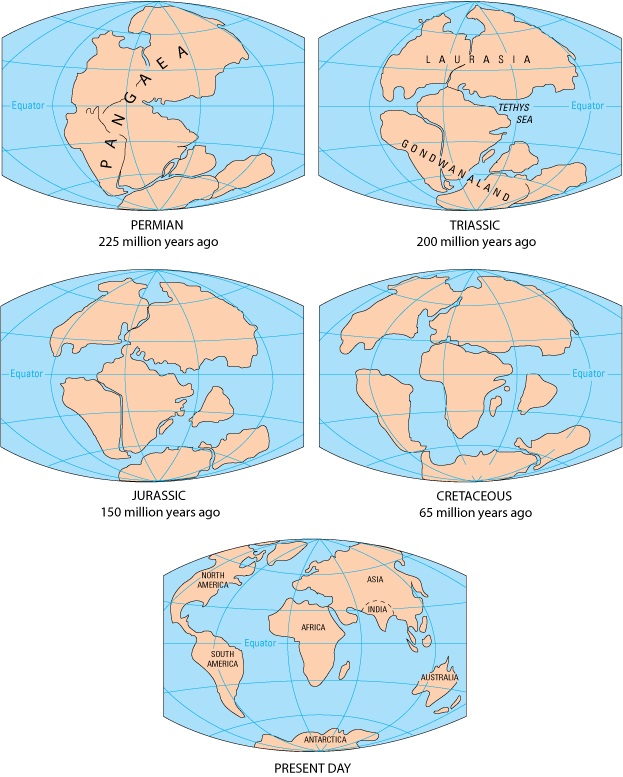Most scientists believe the universe began in the Big Bang 14 billion years ago. The big bang was a massive explosion that produced two things - matter and energy. At the time of the big bang, the entire universe was compressed in a bubble thousands of times smaller than a pinhead. It was hotter and more dense than anything we can imagine. The universe grew and cooled and eventually stars and galaxies formed.
 Source: Futurism.com
Source: Futurism.com
The Earth
The Earth was formed about 4.6 billion years ago, that's 4,600,000,000 years ago. It was formed by collisions of particles in a large cloud of material. Slowly gravity gathered together all these particles of dust and gas and formed larger clumps. These clumps continued to collide and gradually grew bigger and bigger eventually forming the Earth. The earth at this time was very different to how we know it today.
Earth's Tectonic History
In the last section we looked at plate tectonics and the movement of the large plates that make up the Earth's crust. Here we will look at how plate tectonics has changed the face of the earth over the last few billion years and how it is continuing to change.
The idea of continental drift was the forerunner of the theory of plate tectonics. Plate tectonics is thought of as the unifying theory as all of geology can be explained using it. The 50th Anniversary of the theory of plate tectonics was celebrated in 2017 but a number of geologists had been working towards the idea in the years before that.
By looking at the globe, we can see that the east coast of South America seems to fit perfectly, almost like a puzzle, into the west coast of Africa. We can also see that North America can be rotated slightly and made to fit comfortably next to Europe, and Asia.
Take a look at a map and see if you can see this.
This is evidence that at one point all of these continents were once joined up. This giant landmass known as a supercontinent was called Pangea. The word Pangaea means "All Lands", this describes the way all the continents were joined up together. Pangea existed 240 million years ago and about 200 millions years ago it began to break apart. Over millions of years these pieces came to be the continents as we know them today.
Pangaea was not the first supercontinent and it will not be the last. It is best known because it possible to reconstruct it from the current continents.

Source: Kious, Jacquelyne; Tilling, Robert I.; Kiger, Martha, Russel, Jane [Public domain], via
Wikimedia CommonsIreland's geology formed before, after and during the time of Pangaea, and our oldest rocks are possibly from the time of an earlier supercontinent. To learn how Ireland got to where it is today see
Geology of Ireland in the Education section.